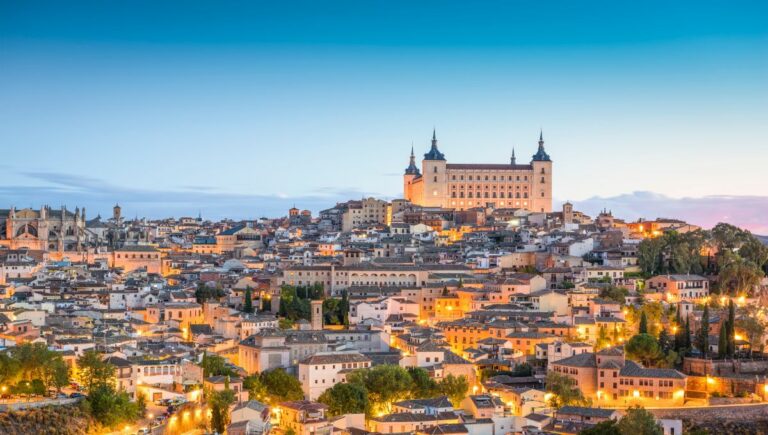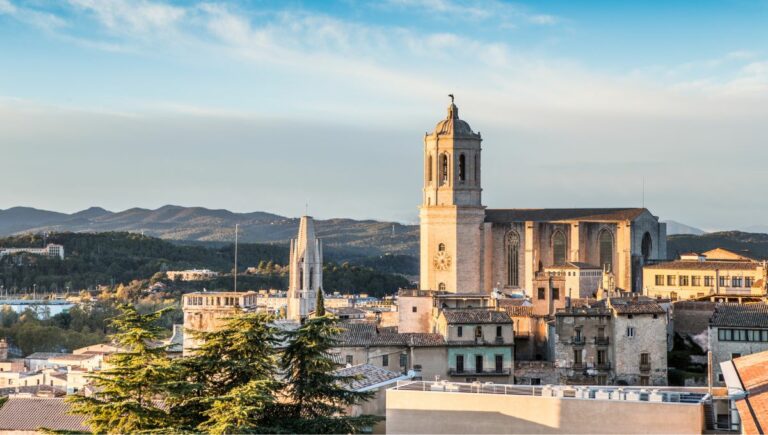The city of Málaga is the capital of the Province Málaga in Southern Spain, known as Málaga España. Malaga, Spain, is located in the Andalusia region, one of Spain’s 17 Autonomous regions. It is one of the most ancient cities since Roman rule in Spain. The locality is rich in culture, history, and gorgeous tourist sites. Remains of Moorish rule can still be seen in the southern Costa del Sol region.
A is a port city on southern Spain’s Costa del Sol; Málaga is known for its high-rise hotels and resorts jutting up from yellow-sand beaches.
Looming over the modern skyline are the city’s two massive hilltop citadels, the Alcazaba and ruined Gibralfaro, remnants of Moorish rule. The city’s soaring Renaissance cathedral is nicknamed La Manquita (“one-armed lady”) because one of its towers was curiously left unbuilt.
In this post, I’ll introduce you to Málaga’s history, the things you cannot miss, what yo can expect from the weather, beaches, shopping and much more. So let’s slap on some sunscreen and uncover Málaga, a city emblematic of Southern Spain’s undying spirit.

Malaga History
The history of Málaga, shaped by the city’s location in southern Spain on the western shore of the Mediterranean Sea, spans about 2,800 years, making it one of the world’s oldest cities. The first inhabitants to settle in the area may have been the Bastetani, an ancient Iberian tribe.
The Phoenicians founded their colony of Malaka about 770 BC. From the 6th century B.C., it was under the reign of Carthage in present-day Tunisia. From 218 BC, Malaca was ruled by the Roman Republic. It was federated with the Roman Empire at the end of the 1st century during the reign of Domitian. After that, it governed itself under its municipal code, the Lex Flavia Malacitana, which granted free-born persons the privileges of Roman citizenship.
The decline of the Roman imperial power in the 5th century led to invasions of Hispania Baetica by Germanic peoples, who the Byzantine Empire opposed. In Visigothic Spain, the Byzantines took Malaca and other cities on the southeastern coast and founded the new province of Spania in 552.
Malaca became one of the principal cities of the short-lived Byzantine Provincia Spaniae (in Latin), which lasted until 624 when the Byzantines were expelled from the Iberian Peninsula. After the Muslim conquest of Spain (711–718), the city, then known as Mālaqah, was encircled by walls, next to which Genoese and Jewish merchants settled in their quarters.
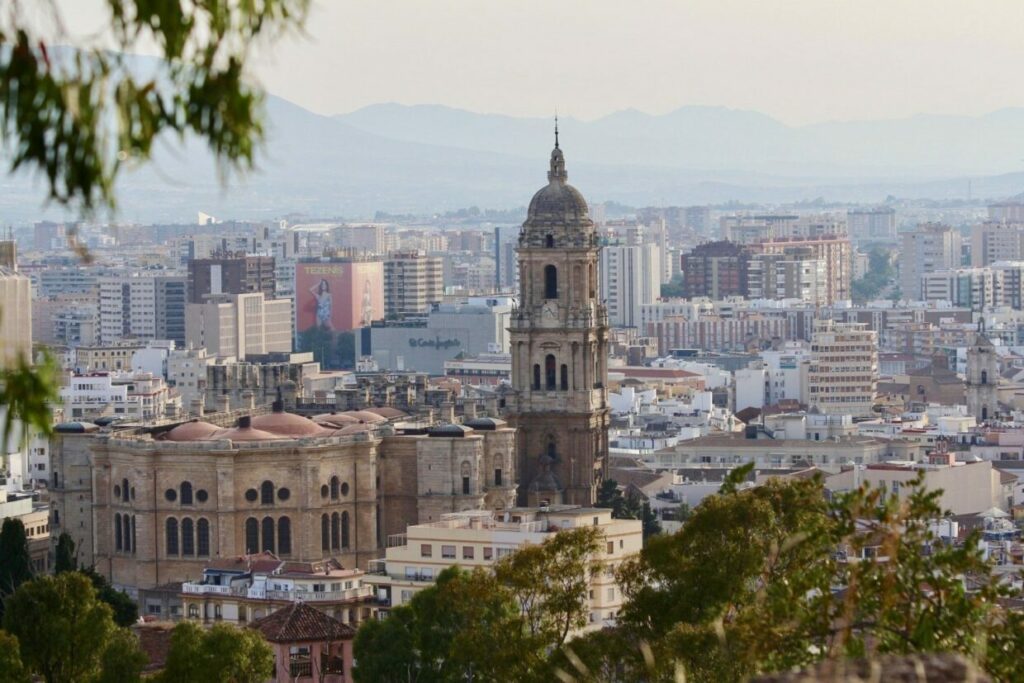
In 1026 it became the capital of the Taifa of Málaga, an independent Muslim kingdom ruled by the Hammudid dynasty in the Caliphate of Córdoba, which existed for four distinct time-periods: from 1026 to 1057, from 1073 to 1090, from 1145 to 1153, and from 1229 to 1239 when the Nasrid Kingdom of Granada finally conquered it.
The siege of Mālaqa by Isabella and Ferdinand in 1487 was one of the longest of the Reconquista. The Muslim population was punished for its resistance by enslavement or death. Under Castilian domination, churches and convents were built outside the walls to unite the Christians and encourage new neighbourhoods.
In the 16th century, the city entered a slow decline period, exacerbated by epidemics of disease, several successive poor food crops, floods, and earthquakes.
With the advent of the 18th century, the city began to recover some of its former prosperity. For much of the 19th century, Málaga was one of the most rebellious cities of the country, contributing decisively to the triumph of Spanish liberalism.
Although this was a time of general political, economic, and social crisis in Málaga, the city was a pioneer of the Industrial Revolution on the Iberian Peninsula, becoming the first industrialized city in Spain. This began the ascendancy of powerful Málagan bourgeois families, some of them gaining influence in national politics.
In the latter part of the century, during the short regime of the First Spanish Republic, the social upheavals of the Cantonal Revolution of 1873 culminated in the Canton of Málaga on July 22nd, 1873. Málaga’s political life then was characterized by a radical and extremist tone. The federal republican (republicanismo federal) movement gained strong support among the working classes and encouraged insurrection, producing great alarm among the affluent.
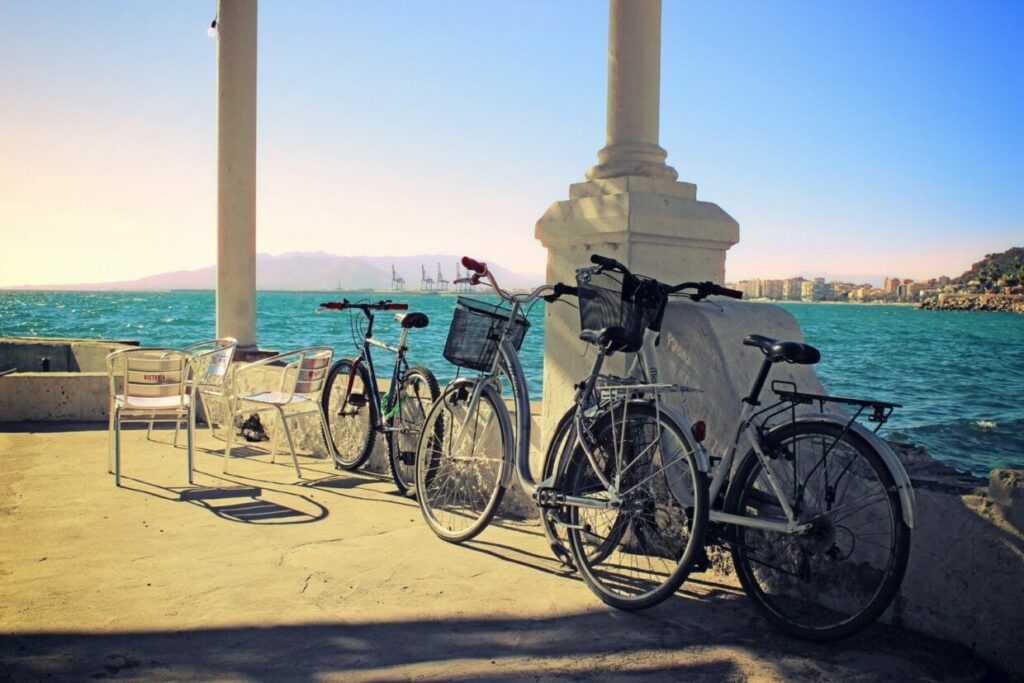
A new decline of the city began in 1880. The economic crisis of 1893 forced the closing of the La Constancia iron foundry. It was accompanied by the collapse of the sugar industry and the phylloxera blight spread, which devastated the vineyards surrounding Málaga.
The early 20th century was a period of economic readjustment that produced a progressive industrial dismantling and fluctuating commerce development. Economic depression, social unrest, and political repression allowed petite bourgeois republicanism and the labour movement to consolidate political positions.
In 1933, during the Second Spanish Republic, Málaga elected the first deputy of the Communist Party of Spain, or Partido Comunista de España (PCE). In February 1937, the nationalist army, with Italian volunteers’ help, launched an offensive against the city under General Queipo de Llano’s orders, occupying it on February 7th. Local repression by the Francoist military dictatorship was perhaps the harshest of the civil war, with an estimated 17,000–20,000 citizens shot and buried in mass graves at San Rafael’s cemetery.
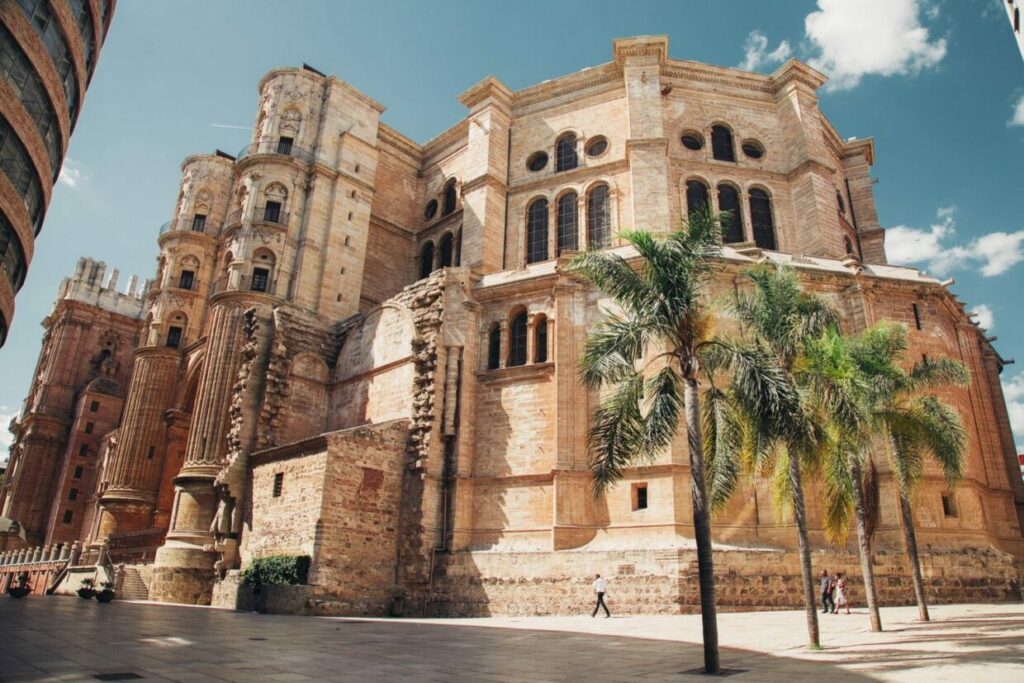
During the military dictatorship, the city experienced the rapid expansion of tourism from abroad on the Costa del Sol, igniting an economic boom in the city beginning in the 1960s. After the end of the Francoist military dictatorship, the first candidate for mayor on the ticket of the Spanish Socialist Workers Party or Partido Socialista Obrero Español (PSOE) was elected and remained in office until 1995, when the conservative Popular Party or Partido Popular (P.P.) won the municipal elections.
You may also enjoy: Cadiz city guide
Malaga Weather and Climate
If you plan to visit Málaga, it is essential to know what the Málaga weather and climate are like. It can help you decide what kind of things you can pack along on your journey. Malaga has the same weather as Costa Del Sol weather.
The average Malaga Spain weather includes mild winters and hot summers. The average Malaga temperature ranges from 30 – 35°C (86 – 95°F). The coastal winds have a cooling effect, and there is usually sunshine throughout the year. One hundred forty years ago, the temperature reached a record high of 43.3°C (109.9°F) in August. The record low is -0.9°C (30.4°F), which was set back in 1891.
Let’s look at Malaga’s monthly weather more specifically.
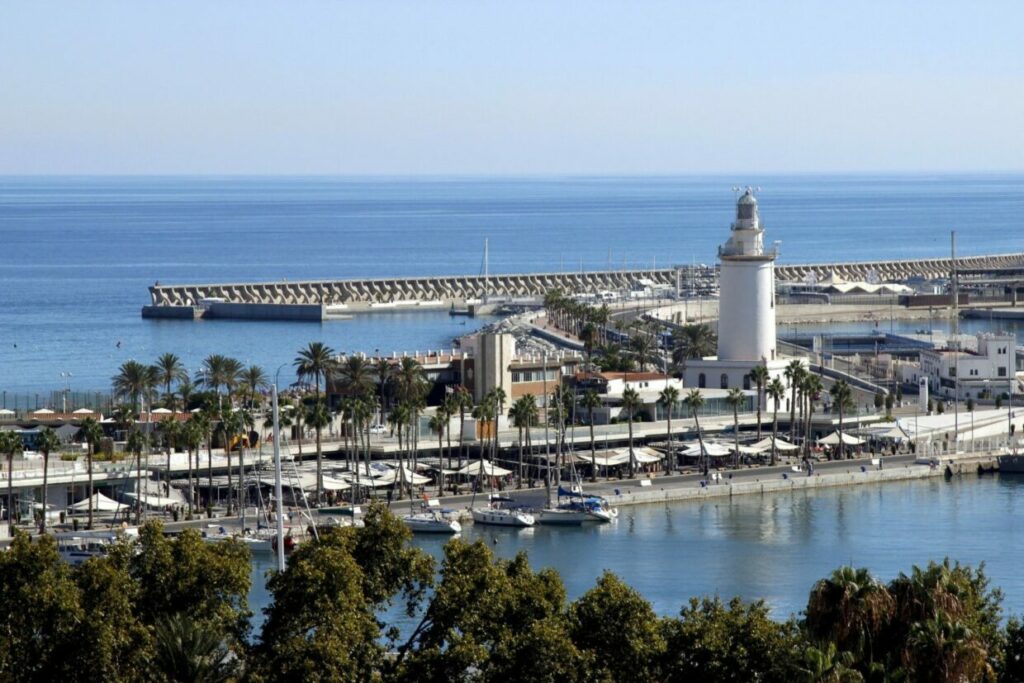
Malaga Spain Weather January
When looking at the weather forecast, Malaga stays very consistent in January with an average high temperature of 14.7°C (58.5°F) and an average low temperature of 10.1°C (50.2°F), making January one of the coldest months of the year. The mean water temperature in January is 15°C (59°F). Approximately 80mm of precipitation will fall on the city during January.
Malaga Weather February
Regarding Malaga temperature, February is similar to January. With an average temperature varying between 9.8°C (49.6°F) and 14.8°C (58.6°F), making it usually the coldest month of the year. The water temperature is also slightly cooler averaging 14°C (57.2°F). Considering Malaga Spain weather, February has less than 80mm of precipitation, making it an ideal month to visit for those who don’t like heat and crowds.
Malaga Spain Weather March
The weather forecast, Malaga is still cool in March. The temperature will range from an average high of 16.2°C (61.2°F) and an average low of 10.8°C (51.4°F). Things are slowly starting to warm up with the beginning of Spring. However, the water temperature is still at an average of 14°C (57.2°F). The amount of precipitation in March averages 60mm.
Malaga Spain Weather April
The weather in April is starting to warm up with average temperature fluctuating between 12.8°C (55°F) and 18.3°C (64.9°F). Malaga climate starts improving in April with the water temperature slowly rising to 15°C (59°F) and the monthly precipitation falling to 40mm.
Malaga Spain Weather May
As part of the Costa del Sol Spain weather, May is a beautiful month with the temperature in the range of 15.9°C (60.6°F) as an average low and 21.6°C (70.9°F) as an average high. The water temperature is averaging 17°C (62.6°F), and precipitation has dropped to approximately 22mm.
Malaga Weather June
The temperature in Malaga in June averages between 19.1°C (66.4°F) and 25.2°C (77.4°F). In the first month of summer, things start to warm up. The water temperature is now averaging 18°C (64.4°F), and the precipitation has again dropped to only about 15mm.
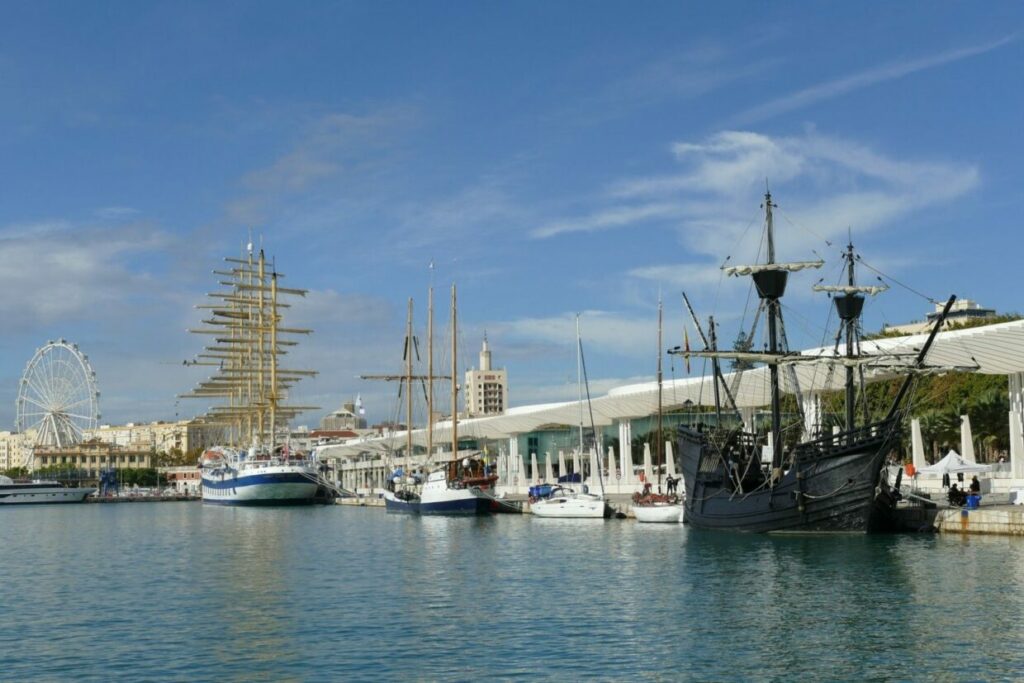
Malaga Weather July
As most people are planning their summer holiday, July is a hectic month in Malaga. The average temperature varies between 22.2°C (72°F) and 28.5°C (83.3°F). The water temperature has warmed up to approximately 21°C (69.8°F). There are only a few millimetres of precipitation, if any, during July.
Malaga Weather August
If you are planning a trip during August, the weather in Malaga’s 15-day forecast usually doesn’t change much this month. August is the warmest month of the year, with an average high temperature of 28.8°C (83.8°F) and an average low temperature of 23°C (73.4°F). The water is the warmest temperature of the year, averaging 22°C (71.6°F). There may be some precipitation this month, with an average of just 5mm.
Malaga Weather September
Even though September is the first month of autumn, Malaga 14 day weather forecasts are still very warm, with average temperature varying between 25.6°C (78.1°F) and 20.4°C (68.7°F). The water temperature will start to cool but will still average 21°C (69.8°F). There will also be a slight increase in precipitation to approximately 15mm.
Malaga Weather October
The weather in Malaga, Spain, in October, is slowly cooling down. However, it is still a lovely time of the year. Regarding Malaga temperature, October averages a temperature varying between 17.9°C (64.2°F) and 22.5°C (72.5°F). The water temperature will drop to about 19°C (66.2°F), and precipitation will increase to an average of 55mm.
Malaga Weather November
During the last month of autumn, it is still lovely to visit Malaga, especially for those who don’t like the heat and crowds and do like the rain. Malaga temperature in November averages between 13.5°C (56.3°F) and 17.8°C (64°F). The water temperature will drop to about 17°C (62.6°F). November is the wettest month of the year, averaging 115mm of precipitation.
Malaga Weather December
The weather in Malaga, Spain, in December is cool, with the average temperature ranging between a min of 11.6°C (52.9°F) and a max of 15.7°C (60.3°F). The south Spain weather averages 100mm of precipitation, and the water temperature is around 16°C (60.8°F).
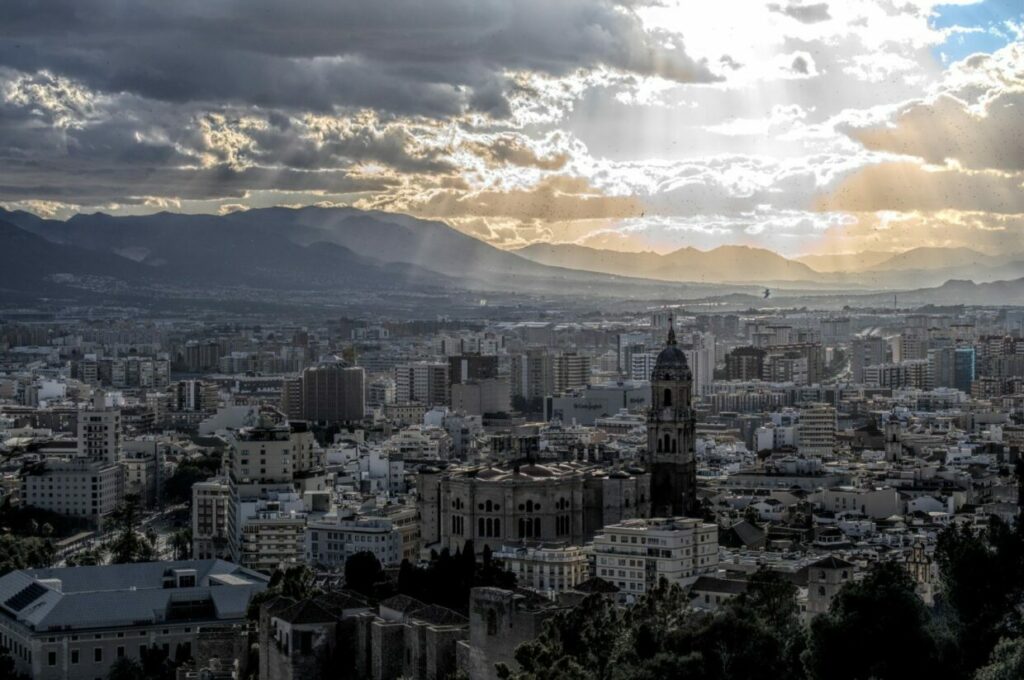
During the summer months, you want to make sure you are wearing sunscreen and drinking plenty of water. Overheating and dehydration can be life-threatening, and you do not want to be sick on your Málaga trip. If you want to see the 14-day weather or the long-range weather for Spain, check out the BBC weather for Malaga here.
Things to do in Malaga
If you are visiting the city for the first time, you must be wondering- what to do in Málaga, Spain? There are countless activities in Malaga. From relaxing on the beach, getting pampered at the spa, to playing water sports, visiting museums, exploring castles, and going on day trips. Here we combine some of the popular Málaga tourist attractions and some of the best places to visit in Málaga that you must see when you plan your trip!
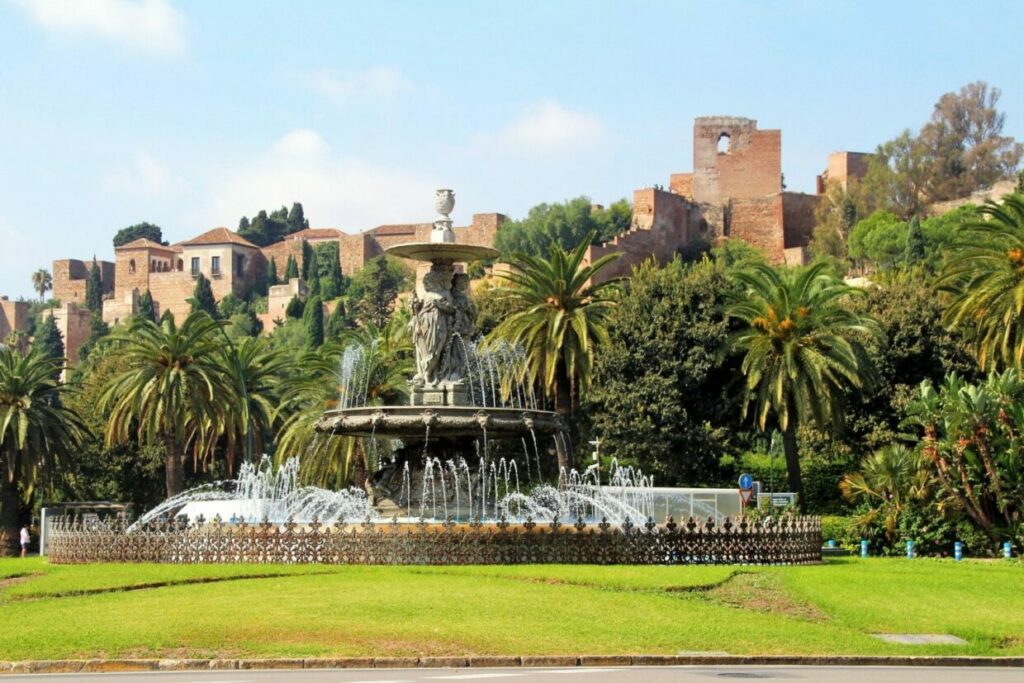
Alcazaba of Malaga – A historic Moorish castle
The Alcazaba is one of the most gorgeous places to visit in Málaga. This stunning Palace was built by the Hammudid dynasty back in the 11th century. It is preserved in such a striking way that you can still see the original architecture and design. It is now open to the public to view this historic fortification. Moreover, it is right next to the calming coast and its beaches. So, you can enjoy not only the historical monument but also the beautiful coastline.
Opening times
- Summer (1 April- 31 October): It opens at 9:00 and it closes at 20:00 (Last entry time at 19:15).
- Winter (1 November – 31 March): It opens at 9:00 and it closes at 18:00 (Last entry time at 17:15).
- The last entry time of the Alcazaba and Gibralfaro is 45 minutes before the closing time.
Entrance fees
| General entrance | Reduced entrance | |
| Alcazaba | €3.50 | €1.50 |
| Castle of Gibralfaro | €3.50 | €1.50 |
| Combined | €5.50 | €2.50 |
| Guided Tour | €10 | €8 |
Reduced entrance is for: Students, Seniors over 65, Retired people, those with Disabilities, and the Unemployed.
Gibralfaro Castle – panoramic views of the city
Castillo de Gibralfaro was built in 929AD by Abd-al-Rahman III, Caliph of Cordoba, on a former Phoenician enclosure and lighthouse, from which its name was derived – Gebel-faro (Arabic and Greek, meaning rock of the lighthouse). Yusef 1, Sultan of Granada, enlarged it at the beginning of the 14th century, adding the double wall down to the Alcazaba. You can visit the castle to enjoy its rich history and architecture. The castle stands on top of a 130-meter-tall hill. Anybody who likes exploring ancient places would love this site!
There are three ways to reach the entrance of the castle. First (from the Alcazaba), take Paseo de Don Juan Temboury near the Alcazaba entrance. Following the fortress’s outer wall, you will join a cobbled path, which lies within the Coracha pine trees and follows the hill’s contours. The only kiosk is at the top so you should bring some water with you. Alternately from the Plaza del General Torrijos, you can climb the steps that will connect to the same cobblestone path. If walking or climbing stairs is not possible for you, you can always take a taxi or tourist bus.
Opening hours
- Summer: 9:00 am to 20:00h (June 1st to September 30th)
- Winter: 9:00 am to 18:00h (October 1st to May 31st)
- Closed January 1st, February 28th & December 25th
Entrance Fees
- Normal: 2.20€
- Joint ticket Alcazaba & Gibralfaro: 3.55€
- Free entry on Sundays after 14:00h.
Malaga Cathedral – Stunning Renaissance Architecture
Another place that most people would recommend is the Catedral de la Encarnacion de Málaga. The Cathedral has a sneak peek into the Renaissance period with work beginning around 1528 and was not completed until the 17th century. The area has always been a religious place.
The Cathedral is built on top of ancient Almohad mosque remains and various former cultural structures. Considering all the old architectural buildings, it is one of the best in Málaga. Numerous styles of art can be found throughout the national landmark. The Roman Catholic church is open to visitors from 9 am to 12:00h.
Get more information on the Malaga Cathedral website.
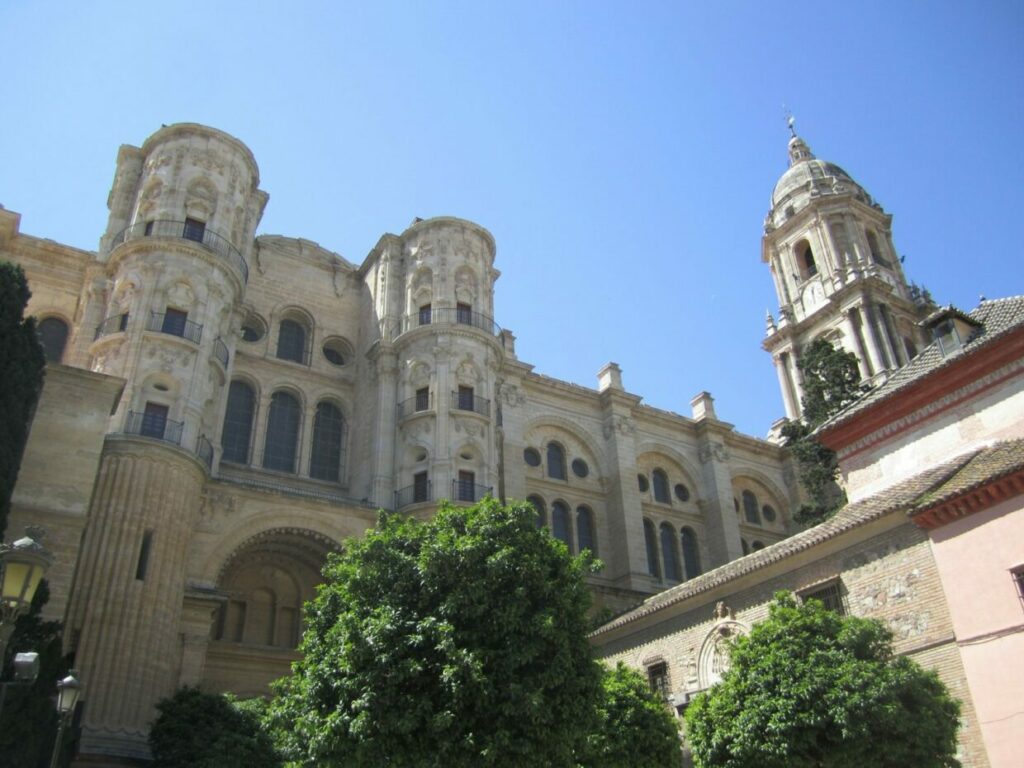
Museums In Malaga, Spain
Malaga has over 30 museums and, in 2017, rebranded itself as the ‘City of Museums.’ Here are a few of the Malaga Museums you should go to when you visit Malaga.
Picasso Museum Málaga
Málaga is known for its museums and historic preservation. One of Málaga’s most popular tourist destinations is the Pablo Picasso museum. The museum opened in 2003 and has 285 works donated by the members of Picasso’s family. It is the must-stop for art lovers and enthusiasts. Get more information from the Picasso Museum website.
Opening hours
- November-February: from 11:00 to 17:00h
- March to June: from 11:00 to 18:00
- July-August: from 11:00 to 19:00
- September-October: from 11:00 to 18:00
- Special hours on December 24th and 31st and January 5th – 11:00 to 15:00h
- CLOSED: December 25th, January 1st, and January 6th
Entrance Fees
- Ticket prices vary from 8€ – 12€. Some discounts and free admission are available for some people. Consult their website.
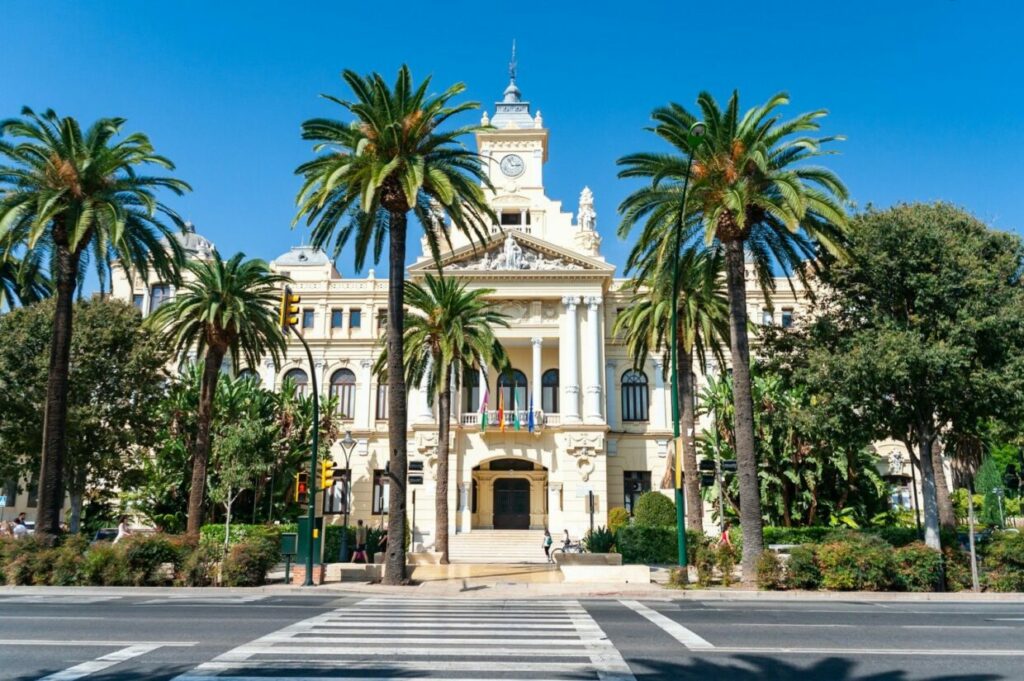
Carmen Thyssen Museum
The Carmen Thyssen Museum’s primary focus is 19th-century Spanish paintings, predominantly Andalusian, based on Carmen Cervera’s collection. She was the fifth wife of Baron Hans Heinrich Thyssen-Bornemisza. For more information, visit the Carmen Thyssen Museum website.
Opening hours
- Tuesday to Sunday from 10:00 to 18:00.
- Monday closed (except Monday holidays)
- CLOSED: December 25th and January 1st
Entrance fees
- Single entry – General: 10€, Reduced: 6€, Group: 8€
Museo de Málaga
Malaga Museum, also known as Palacio De La Aduana, is a two-in-one museum. It brought together the former 1913 Museo Provincial de Bellas Artes and the 1947 Museo Arqueológico Provincial. The first stone of the original “customs palace” was laid on October 20th, 1791. However, in 1829 it was inaugurated as a Royal Tobacco Factory. Although under one roof, the museum remains institutionally divided into two “sections” corresponding to the older museums. Visit their website here for more information.
Opening hours
- From July 1st – August 31st, Open Tuesday to Saturday 09:00 to 21:00; Sundays and holidays from 09:00 to 15:00. Closed on Monday (except holiday eve, with holiday hours)
- From September 1st to June 30th – Open Tuesday to Saturday from 09:00 to 18:00; Sundays and holidays from 09:00 to 15:00. Closed on Monday (except holiday eve, with holiday hours)
- CLOSED January 1st and 6th; May 1st, and December 24th, 25th, and 31st.
Entrance fees
- Accredited E.U. citizens can enter for free. Other nationalities: 1.50€.
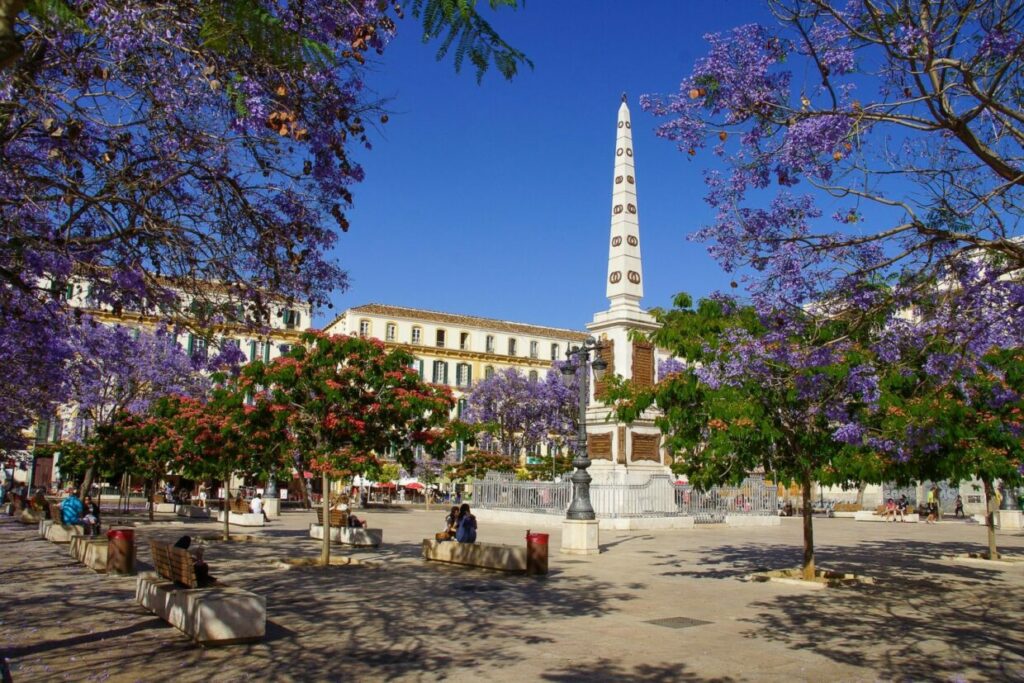
Monuments To See In Malaga
There are countless monuments and landmarks to see on your Malaga holidays. Here are just a few that you will probably see on your daily adventures.
Estatua de Hans Christian Andersen – walking from Malaga train station to the center of Malaga, you may spot the bronze statue of the famous Danish author Hans Christian Andersen on a bench.
El Cenachero Statue – located on Plaza De La Marina, is a lovely area with a beautiful fountain, several intriguing statues in a lovely well-kept park area.
Marques Larios – Completed in 1899, this bronze statue on a marble plinth of 2nd Marques Larios is located at the bottom junction of Calle Marques de Larios and opposite Plaza de la Marina. Larios was a significant shareholder in the company that was created to build the main thoroughfare named after him. Sculpted by Mariano Benlluire, the figures on two sides of the statue represent work (male) and charity (female).
Torrijos Monument – Situated in the centre of Plaza de la Merced, this is an unusual-looking monument. Around the bottom are plaques containing the information above which the monument tapers like an obelisk decorated with double wreaths.
Estatua de Pablo Ruiz Picasso – This is a bronze statue for the famous artist. This significant statue is in Plaza de la Merced, in front of the birthplace of Pablo Ruiz Picasso (1881-1973). The figure represents the artist sitting on a marble bench with a notebook and pencil in his hand.

Malaga Spain Beaches
Málaga, located in the area known as the Costa del Sol in the South of Spain, is a popular tourist destination. This region is full of coastal towns and small communities. Stretching several kilometres of beautiful sandy beaches, you can discover six main beach areas collectively called Málaga Beach. However, they are different beaches. They are all situated and connected with the beautiful palm tree-lined Promenade of Pablo Ruiz Picasso. Along the promenade, you will find countless Malaga beach bars and restaurants to sample traditional cuisine. La Malagueta Beach and La Caleta Beach are the busiest.
El Palo Beach
This family-friendly Malaga city beach is famous for diving and fishing. You may be able to go surfing if your timing is right here. You can access the beach from the promenade. Facilities include garbage bins, bar-restaurants, parking, a public telephone, and showers. Sunbeds and parasols are also available for hire. You will enjoy the crystal blue water here. Several restaurants here offer locally sourced fresh fish.
Las Acacias – Pedralejo Beach
This blue flag beach is spotless and family-friendly. Facilities include children’s play area, disabled access, first aid point, hire of sunbeds and parasols, lifeguard stand, parking, public telephones, showers, and warning advice bins.
Baños Del Carmen Beach
The small beach is a popular fishing area. It is the location of the 1933 Baños del Carmen Bathing Pavilion and Restaurant. Parking and garbage bins are available. You can also enjoy a drink or something to eat at one of the Chiringuitos (beach bars).
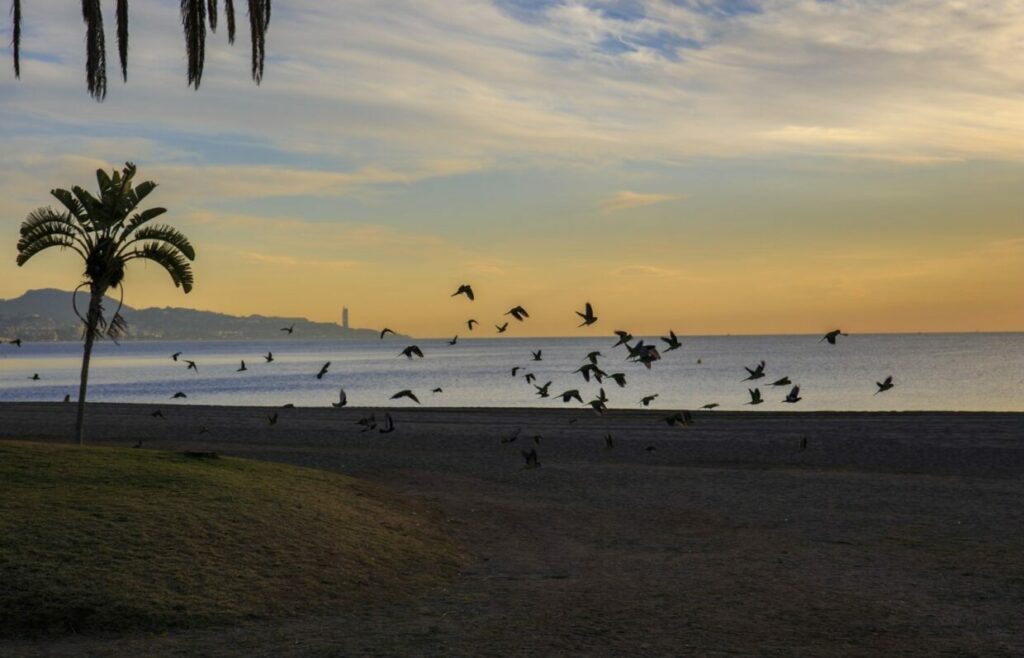
La Caleta Beach
La Caleta beach Malaga is 1 km long and adjacent to La Malagueta beach. It is fully accessible for disabled people and wheelchair users. Facilities include a first aid center, hire of parasols and sunbeds, parking, public telephone, showers, W.C, and a warning advice system.
La Malagueta Beach
La Malagueta beach Malaga is a popular human-made beach that sits closest to the city center and east of the port. The large beach is accessed via the Pablo Picasso promenade, where bars and restaurants are busy day and night. There are also several Chiringuitos serving drinks and tapas. Facilities include a children’s play area, disabled access, hire of sunbeds and parasols, parking, public telephone, showers, W.C, and a warning advice system.
Playa San Andres Beach
Located west of the port and the River Guadalmar mouth, you will find Playa San Andres Beach. Playa San Andres is a 2 km long beach that can be seen for miles due to the tall chimneys of the old sugar factories. The area has several beach bars, a promenade, and a seafront highway. It is the location of the execution of revolutionaries in 1831, including Jose Maria Torrijos and 48 others who were shot without a trial.
San Julian Guadalmar Beach
The official Malaga Nudist beach is located under the Malaga airport flight path. The Parador Malaga Golf Hotel backs the beach. Facilities include a beach bar, parking, public telephone, and showers.
The Málaga Nightlife
The city isn’t just for people that like daytime activities. Malaga also has a very active nightlife. Views of the city lights are beautiful, beach bars are lively, and clubs are open until the early hours of the morning. Many locals take a siesta during the summer’s hot afternoons and enjoy the cooler nighttime temperatures.
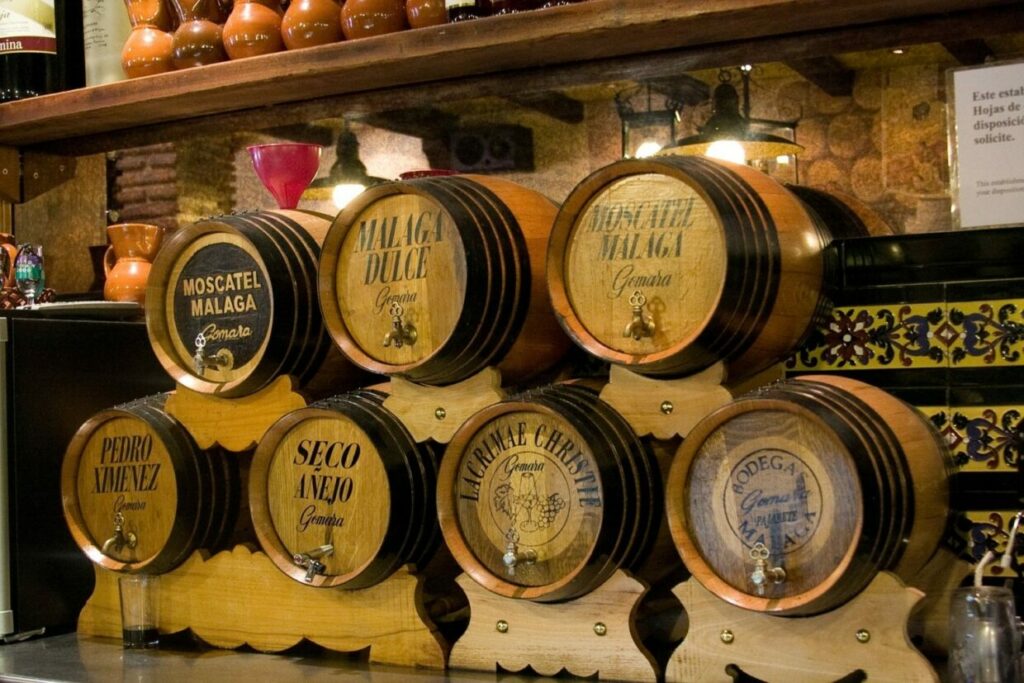
Where To Stay In Málaga
Málaga is a well-known tourist destination. Therefore there are a lot of hotels and other various accommodations, including AirBnBs. However, they can and do book up quickly during peak season. You can find everything from budget-friendly Málaga resorts up to 5-star hotels that offer you luxury services as well.
Several commonly known hotel chains operate within the city. If you are looking for comfortable Málaga accommodation, you can find hotels as cheap as $70 a night for your whole family.
If you are looking for the best area to stay in Málaga, tourists generally prefer Málaga beach hotels. They are in a beautiful location from where you can enjoy the gorgeous coasts, several dining options, the sunshine, and hit the waves whenever you like.
Several Malaga resorts offer travellers a luxurious experience. From saunas, spas, and pools to gymnasiums, there is something for everyone. One of the more popular hotel-resorts is the Gran Hotel Miramar. It is a top-rated Málaga beach hotel located in the heart of all the tourist activities.
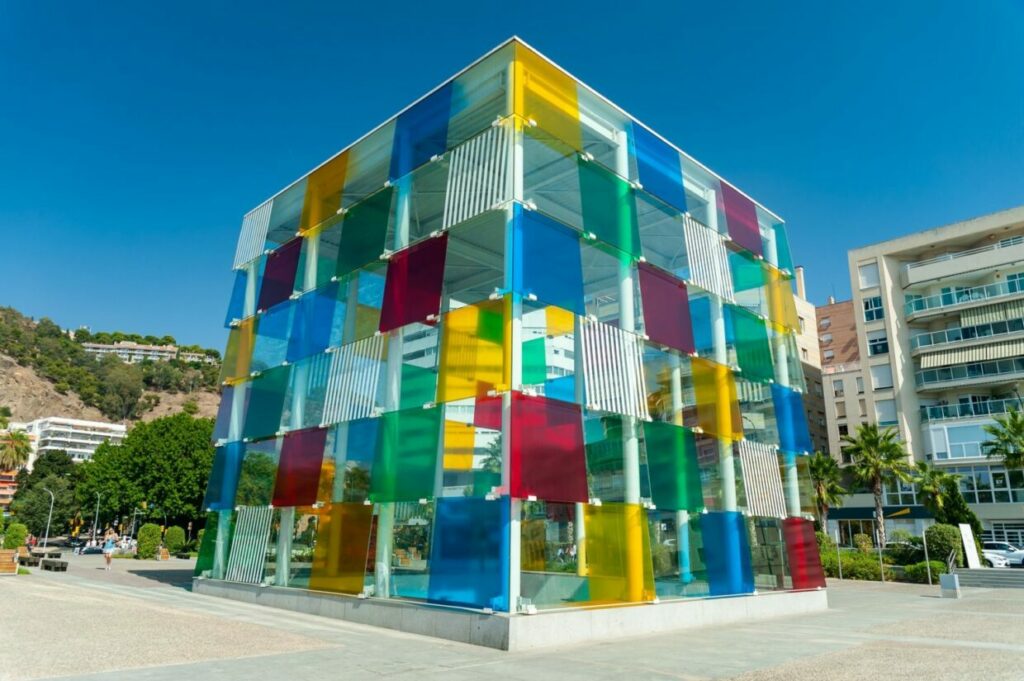
Festivals In Málaga
Malaga has so many festivals and fairs throughout the year that it is tough to keep up. Apart from the national festivals, every community and village have their fairs and festivals to celebrate. They all have various traditions, customs, colorful parades, fiestas with live music and food accompanying them. These are just a few of the festivals celebrated throughout the year.
January
The Three Kings Day & Parade
Theatre Festival
February
Malaga Carnival (Carnaval de Málaga)
Andalucia Day (Día de Andalucía)
March/April
Easter (La Semana Santa)
May
Malaga Patio Festival
Noche en Blanco
June
Malaga Film Festival
Malaga Gastronomy Festival
The Night of San Juan (Noche de San Juan)
Malaga Flamenco Festival
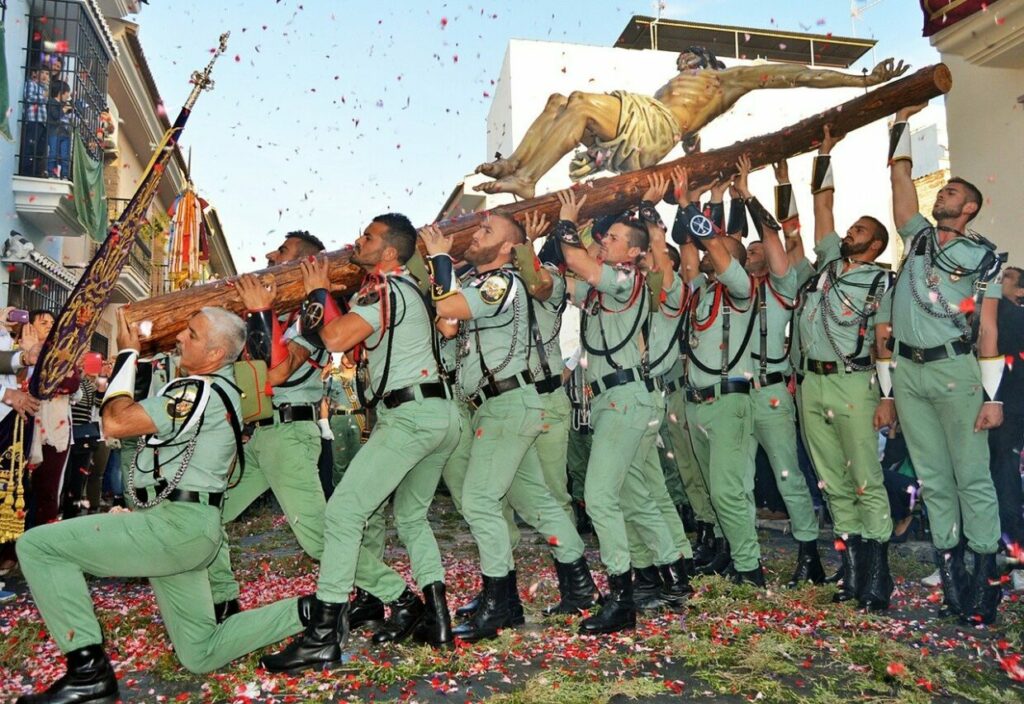
August
Malaga Fair (Feria de Agosto)
September
Malaga Fashion Week
October
Celebrating Picasso
Halloween – Not a traditional celebration in Spain.
November
All Saints’ Day (dia de todos los santos)
Jazz Festival
December
Christmas Markets and Celebrations
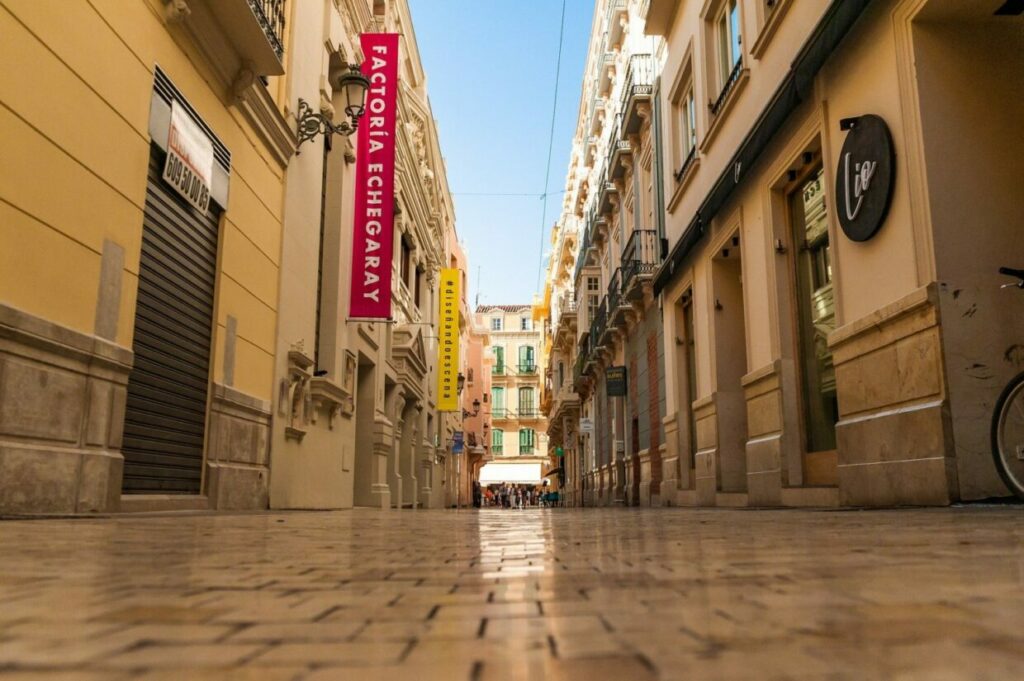
Shopping In Málaga Spain
Like any major city or touristy city, there is plenty to fill everyone’s shopping needs and tastes. Malaga has everything from high-end exclusive shops, large chain and box stores to unique locally owned and made items. Here are a few places you might want to visit for your shopping needs.
Calle Larios – a 19th-century marble-lined pedestrian street that is great for clothes shopping.
Calle Nueva – this street is parallel to Calle Larios. It is also a narrow pedestrian street that is home to international brands and one-off shops only found in Malaga.
Calle Especería/ Cisneros – it is perpendicular to Calle Larios and Calle Nueva. Here you will find a treasure trove of characteristically Spanish clothes.
Calle Compañía – this street is long and has a nice mix of independent stores and bars and cafés.
Calle Andrés Pérez – if you are looking for small and unique shops, this is the street you want to visit first.
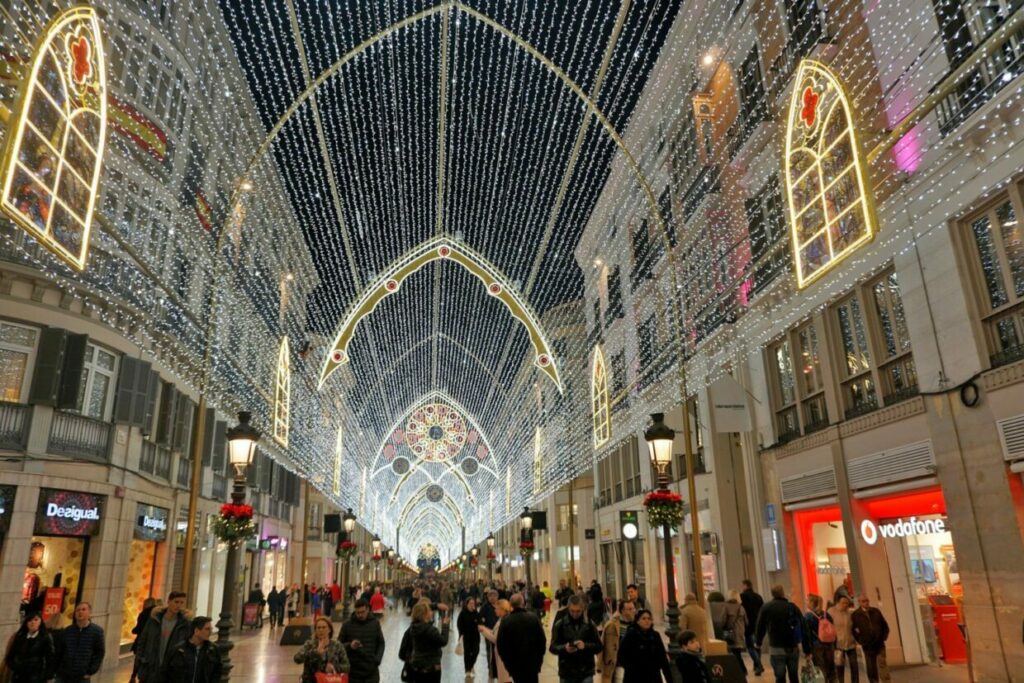
If you prefer to go to a Malaga shopping centre, then you may want to check out these places:
Muelle Uno – it has an arts and craft market on the weekends.
El Corte Inglés – it is Spain’s flagship department store.
Centro Larios – it is located near the train and bus station.
Centro Vialia – it is the newest shopping centre in Malaga and is part of the train station.

How To Get To Málaga
There are four ways you can get to Malaga. Depending on where you are coming from, you may choose to drive to Malaga city. If driving is not an option, you can fly, take a train, or get there on a bus.
Flying to Malaga
Málaga Airport is officially called the Málaga–Costa del Sol Airport. There are numerous direct flights from many countries and other cities in Spain, including Madrid, Barcelona, and Bilbao, to name a few. From the airport, you can get to the city centre via taxi, train, or bus.
Taxi is the most convenient and will cost between €20-€25 for the 15-minute journey.
You can also get to the centre of Malaga from the airport in just 15 minutes using the Line “A” Express Bus. A one-way ticket costs €3. You can buy your ticket outside the terminal or on the bus, but remember, they only accept cash. Look for the bus stop on the ground floor of Terminal 1.
Finally the train. Malaga Airport Train Station is on the Cercanias Line called Aeropuerto in zone 1. There are self-service ticket machines where you can buy tickets with cash and cards. if you’re having trouble, there are usually helpful people about too. Tickets are between €1.80 – €3.60 depending on your required zone. Click here to see the Malaga Cercanias plan.
Of course, the most expensive and least stressful option would be a private transfer, you’ll find plenty of companies online offering this that you can book online.
Train to Malaga
While we’re on trains, let’s talk about arriving in Malaga by train. The main station for services throughout Spain is the Málaga María Zambrano train station. Here, you will also find the Vialia Maria Zambrano Shopping and Leisure Center. The Interurban bus station connection (Benalmádena, Churriana, Fuengirola, and Torremolinos) and international buses also use this facility. For more information on high-speed train lines and departures and arrivals, check out their website here. You can buy your ticket on the Renfe Website Here.
Bus to Malaga
If you prefer to travel by bus, it is usually cheaper, there are several bus routes throughout Spain and Europe that will bring you to Malaga. If you are taking a bus to Malaga, I recommend checking out FlixBus. Throughout 34 European countries, they have 2,500 destinations that over 400,000 daily connections can reach. ALternately you can check tickets and times with Omio.
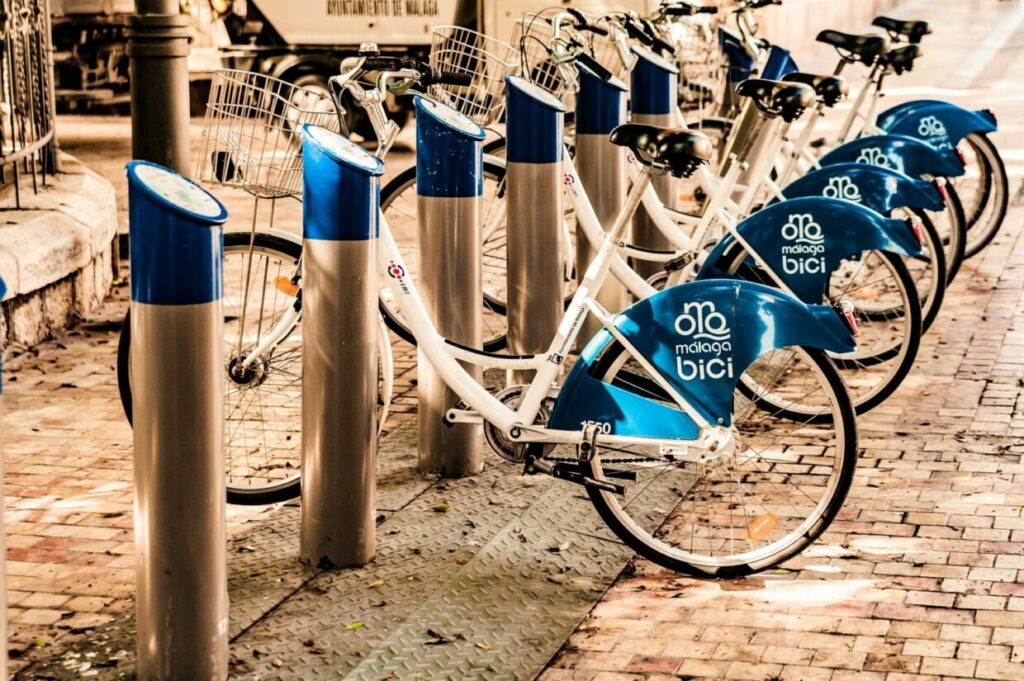
Day Trips from Málaga
You can fill all your days and nights in Malaga city; however, there are many unique places to visit and things to do just outside of the city. Here are some of the best day trips from Malaga, each offering a glimpse into the culture, history, and natural beauty that Southern Spain boasts.
Whether you’re looking for historic towns, breathtaking landscapes, or luxurious seaside escapes, there is bound to be something within touching distance to enjoy.
Setenil de las Bodegas
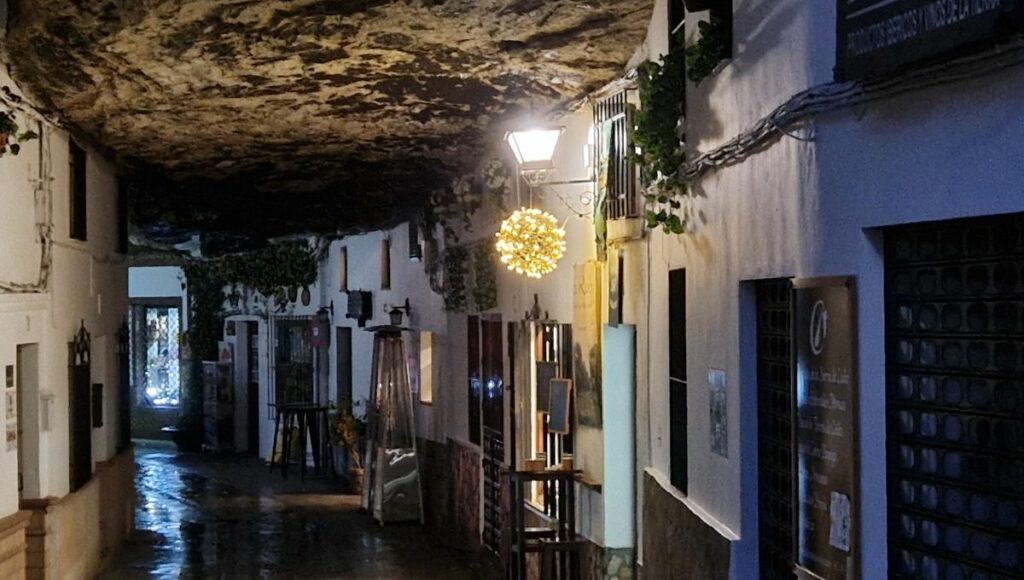
Nestled in the heart of Andalusia, this small town offers a surreal experience. Famous for its houses built under rock overhangs above the Rio Trejo, Setenil de las Bodegas is not just a visual marvel but a culinary hotspot, too. I highly recommend sampling local products like chorizo, honey, and olive oil in this unique setting. The town is easily accessible by car, making it a straightforward day trip from Malaga.
Granada and the Alhambra
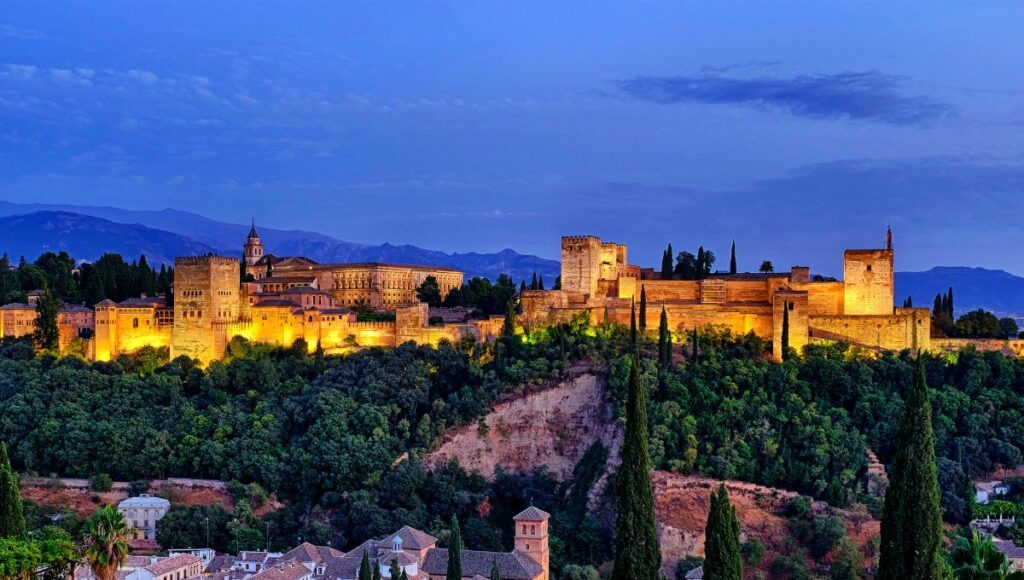
A bit further afield lies Granada, a city where the past lives in harmony with the present. The crown jewel of Granada is the Alhambra, a stunning complex of palaces, gardens, and fortresses that showcase the sophisticated Moorish architecture and culture. Getting there can take a couple of hours by bus or car, but it’s worth every minute, especially if you pre-book your tickets to avoid long lines.
Marbella
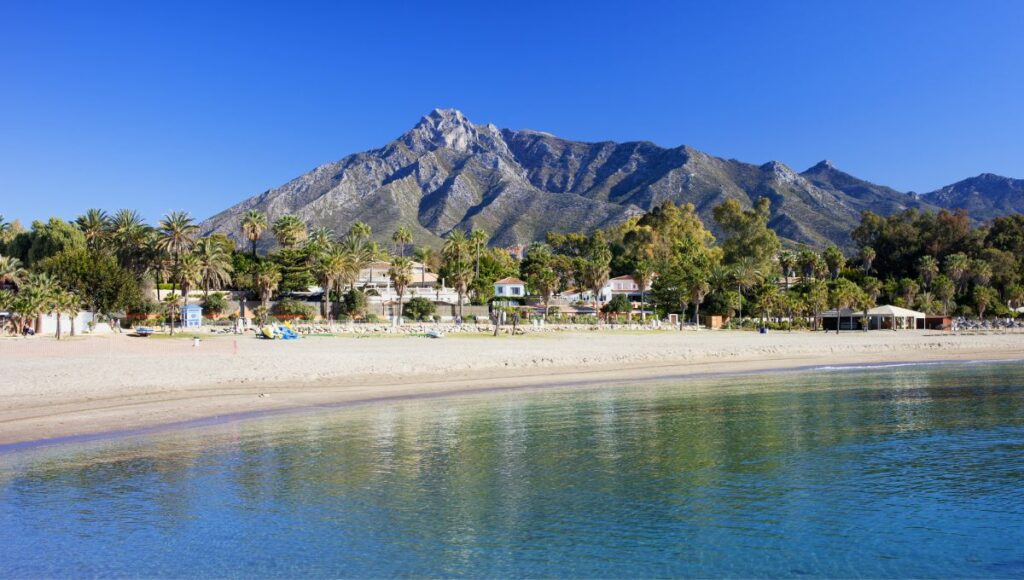
For those seeking a blend of history and luxury, Marbella offers an exquisite escape. This coastal city is known for its upscale resorts, vibrant nightlife, and beautiful Old Town. Just an hour’s drive from Malaga, you can lounge on sandy beaches, explore narrow cobblestone streets, and dine in style. Don’t miss the Orange Square for a quaint afternoon amidst orange trees.
Frigiliana
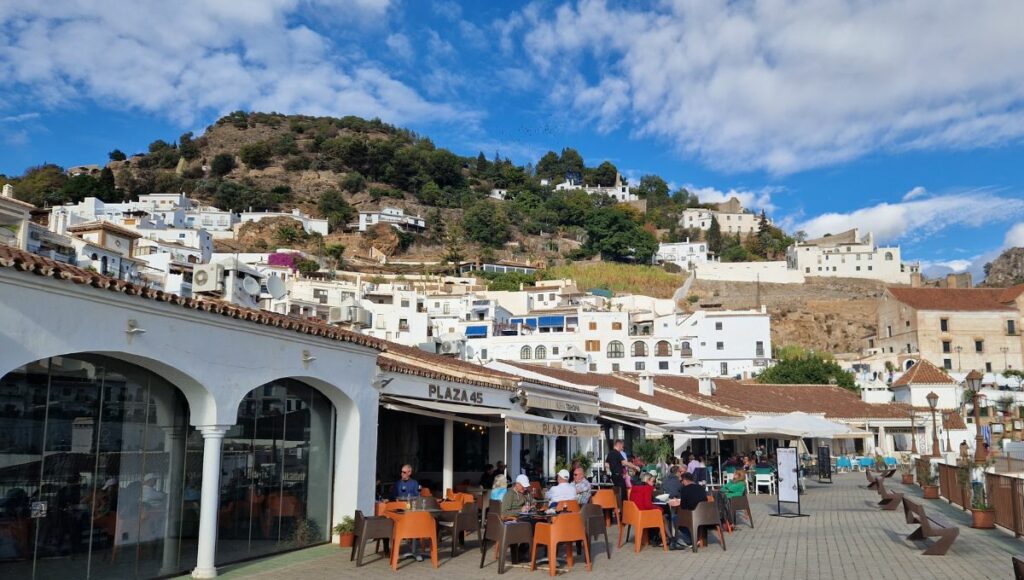
Often cited as one of Spain’s prettiest villages, Frigiliana boasts whitewashed houses adorned with colourful flowers and offers panoramic views of the sea and mountains. As I stepped out of my car, it immediately felt like a special place, and I can say for sure it’s a paradise for photographers. The biggest challenge is trying to get a photo you are satisfied with, as none of my lenses could do it justice. Just a 45-minute drive from Malaga, it’s perfect for wandering, shopping for local crafts, and enjoying traditional Spanish cuisine.
Ronda
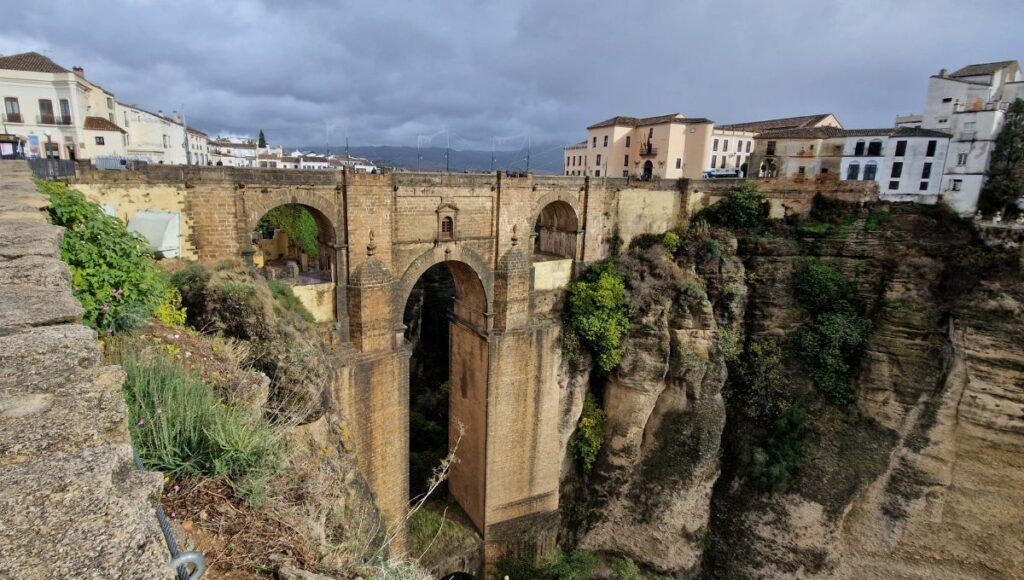
Perched atop a deep gorge, Ronda is a city that literally takes your breath away. The Puente Nuevo bridge, connecting the old and new towns, offers dramatic views of the surrounding landscape. Ronda is also steeped in bullfighting history and is about a two-hour drive from Malaga. Visiting the bullring and exploring the town’s Moorish and Roman ruins make for a rich cultural experience.
Gibraltar
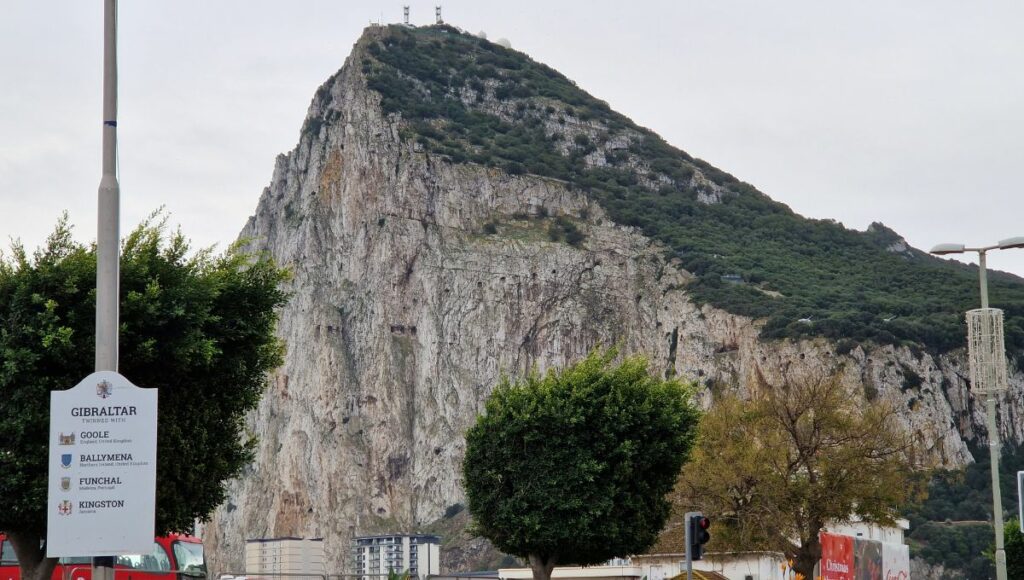
A bit of an outlier, both geographically and culturally, Gibraltar offers a fascinating mix of British and Spanish influences with a touch of Moorish heritage. The Rock of Gibraltar, its famous resident monkeys, and the unique mix of cultures make it a compelling day trip. While it’s a bit further, around a two-hour drive, crossing an international border to this British Overseas Territory adds an adventurous twist to your trip.
Each of these destinations provides a different flavour of Andalusian (or Spanglish) life and history, making them ideal for those looking to deepen their understanding of this region. With Malaga as your base, you’re perfectly poised to explore these and many other experiences, each an easy day trip away.
FAQ’s About Malaga Spain
Below are some frequently asked questions and some fun facts about Malaga.
What is the Population of Malaga?
Not to be confused with the province of Malaga, which has a population of approximately 1.6 million people, the city of Malaga has around 572,000 people.
How much time in Malaga, Spain, is best?
Seven days in Malaga is a reasonable amount of time to relax, enjoy everything in the city, and go on a few day trips to visit the surrounding areas. You can probably see everything in about four days, but we are sure you will want some extra time to relax. There are also many things to do in the surrounding area that you should not miss out on, so you might want to spend a few extra days there.
What is the weather like in Malaga?
The daily average temperature ranges from 12°C (53.5°F) in January to 26°C (79°F) in August. A Record low of -4°C (25°F) was recorded in February 1954. The record high of 43.5°C (110°F) was recorded in July 2020.
Where is Malaga (is Malaga in Spain), and are there other cities near Malaga?
Málaga is located on the Costa del Sol (Coast of the Sun) region in southern Spain. It is on the northern side of the Alboran Sea and the westernmost portion of the Mediterranean Sea. If you are going to Malaga, you should consider visiting these other nearby cities and beautiful towns: Antequera, Casares, Frigiliana, Marbella, Mijas, Nerja, and Ronda.
When is the best time to visit Malaga?
That depends on what you like. The summer is hot and busy with tourists. The winter is quieter, and the weather is cooler with a lot more wind and rain.
What is the best area to stay in Malaga?
Malaga is a compact city. It is easy to walk everywhere you need to go. It is a busy place in the summer months and less crowded in the cooler winter months.
What is the closest airport to Malaga, Spain?
Málaga–Costa del Sol Airport is the airport in Malaga.
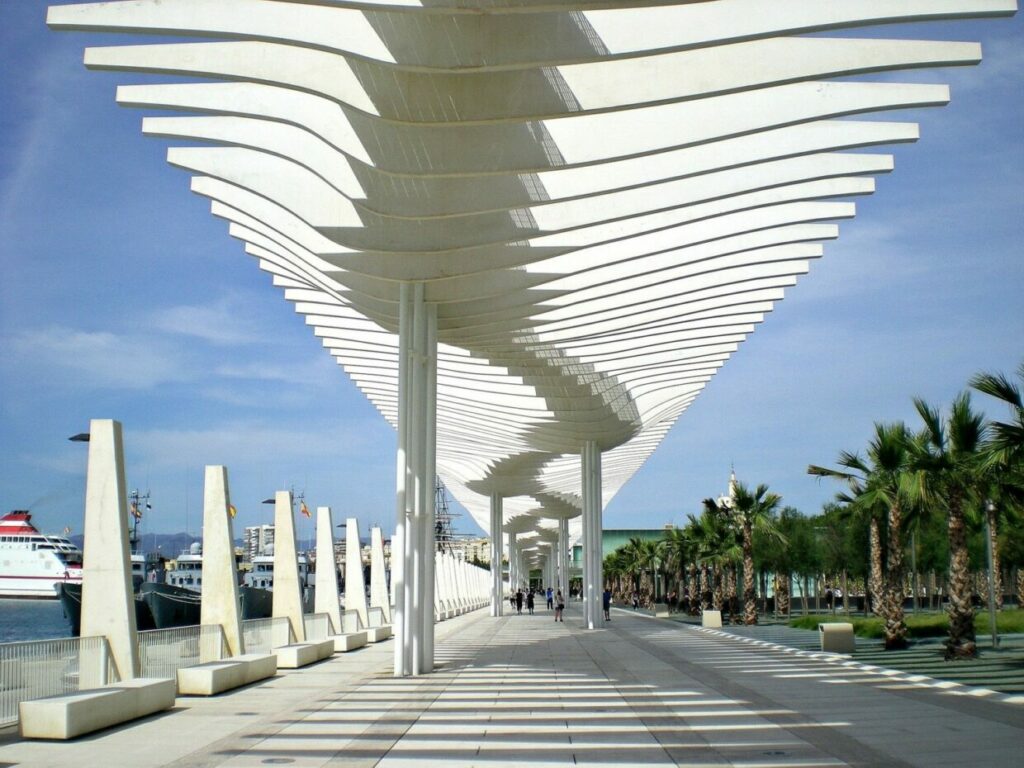
Final thoughts
As we reach the end of this comprehensive guide to Málaga, it’s clear that this city is not just a destination; it’s an experience. Málaga offers something for every traveller. Whether you’re exploring the interesting architecture of the ancient Alcazaba or Renaissance cathedral, sunning yourself on the playas or soaking up the vibrant atmosphere of its festivals, you’re engaging with a city that’s as diverse as it is captivating.
I hope this guide has helped you in deciding if Málaga is the place for your next holiday, or even if yu have already, given you some ideas about how to make the most of your visit.
I’d love to hear from you. If you’ve visited Málaga or are planning to, share your thoughts, tips, and recommendations in the comments below. What are your must-see spots? Any hidden gems you’re willing to divulge? Let’s create a space where we can exchange advice and inspire one another to explore the wonders of Málaga.
Happy travels!


